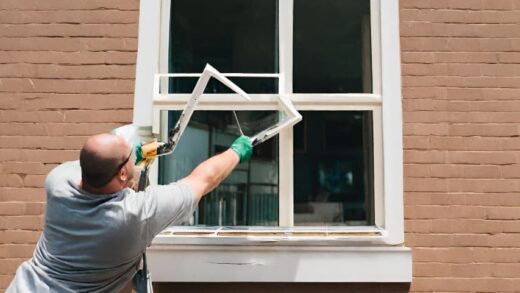This blog post serves as your storm damage survival guide, focusing on sliding glass door repair and Vernon Hills window repair after severe weather events. We’ll walk you through the steps to take, whether you’re dealing with a shattered window or a damaged sliding glass door.
Assessing the Damage
The first step in dealing with storm damage is assessing the extent of the destruction. After a severe weather event, follow these steps to evaluate the damage to your sliding glass doors and windows:
Safety First: Before assessing the damage, ensure your safety and the safety of your family members. Be cautious of any potential hazards like broken glass or unstable structures.
Exterior Inspection: Examine the exterior of your home to identify any visible damage to windows and sliding glass doors. Look for broken glass, damaged frames, and compromised seals.
Interior Inspection: Inspect the inside of your home for signs of water intrusion, drafts, or damaged interiors around windows and doors.
Check for Structural Damage: Assess the structural integrity of the sliding glass door frame and window frame. Ensure there are no cracks, warping, or misalignment.
Immediate Steps to Take
Once you’ve assessed the damage, take immediate action to prevent further issues and ensure safety:
Secure Broken Glass: If there’s broken glass, carefully clear the area, and secure it to prevent injuries. Use boards, plywood, or tape to cover broken windows and sliding glass doors temporarily.
Address Water Intrusion: If you notice water intrusion, use towels and buckets to collect water and prevent further damage. Ensure proper ventilation to aid in drying.
Turn Off Utilities: If you suspect structural damage, turn off gas and electricity to the affected area as a precaution.
Contacting Professionals
For a thorough evaluation and expert repairs, contact professionals who specialize in sliding glass door repair and window repair. Here’s why it’s essential:
Expert Assessment: Professionals can accurately assess the extent of damage and recommend appropriate repairs or replacements.
Safety Assurance: Trained technicians can handle glass and structural issues safely, minimizing risks.
Insurance Claims: Their expertise can help you provide necessary documentation for insurance claims, increasing the chances of coverage.
DIY Temporary Repairs
While waiting for professional assistance, you can perform temporary DIY repairs to mitigate further damage:
Boarding Up: Use plywood or boards to cover broken windows and sliding glass doors. Ensure these temporary measures are secure.
Temporary Sealing: Seal gaps or cracks with temporary sealants to prevent drafts and water intrusion.
Remove Debris: Safely remove any debris from around your windows and doors to prevent additional damage.
Documenting the Damage
Proper documentation is crucial for insurance claims:
Photographs: Take clear photographs of the damage both inside and outside your home. Include close-ups and wide-angle shots.
Detailed Notes: Make notes detailing the date, time, and the type of storm that caused the damage.
Keep Samples: If applicable, retain small samples of damaged materials for evidence.
Insurance Considerations
Understanding your insurance policy and the claims process is vital:
Review Policy: Review your homeowners’ insurance policy to understand the extent of storm damage coverage.
Reporting Damage: Promptly report the damage to your insurance provider. Provide photographs and documentation as evidence.
Working with Adjusters: Cooperate with insurance adjusters during inspections and assessments. Be prepared to answer questions and provide documentation.
Professional Repair Process
Once professionals are on-site, here’s what you can expect during the repair process:
Evaluation: Technicians will perform a thorough evaluation of the damage and provide a detailed repair plan.
Timelines: They will discuss repair timelines and costs, ensuring you have a clear understanding of the scope of work.
Material Selection: Professionals will recommend appropriate materials that meet local building codes for replacement windows and doors.
Preventative Measures
To minimize future storm damage:
Impact-Resistant Windows: Consider installing impact-resistant windows and sliding glass doors designed to withstand severe weather conditions.
Regular Maintenance: Keep up with regular maintenance to ensure your windows and doors are in top condition.
Conclusion
Dealing with storm damage to your sliding glass doors and windows can be a stressful experience, but with the right approach, you can navigate the situation effectively. Prioritize safety, assess the damage, take immediate action, and contact professionals for expert sliding glass door repair and window repair. Proper documentation and insurance considerations will help you in the claims process, while preventative measures can reduce the risk of future storm damage. Remember, your home can weather the storm with the right guidance and swift action.


